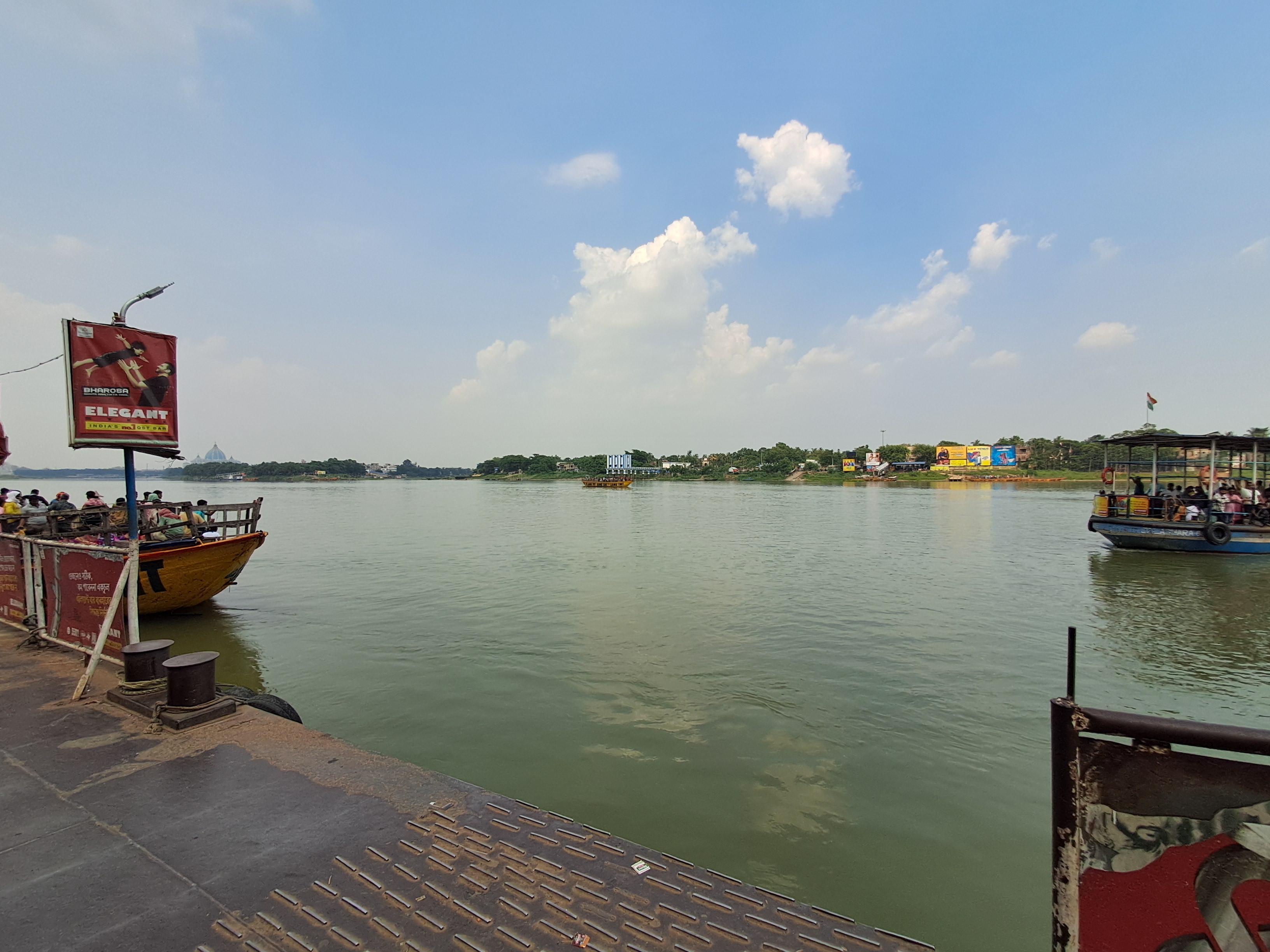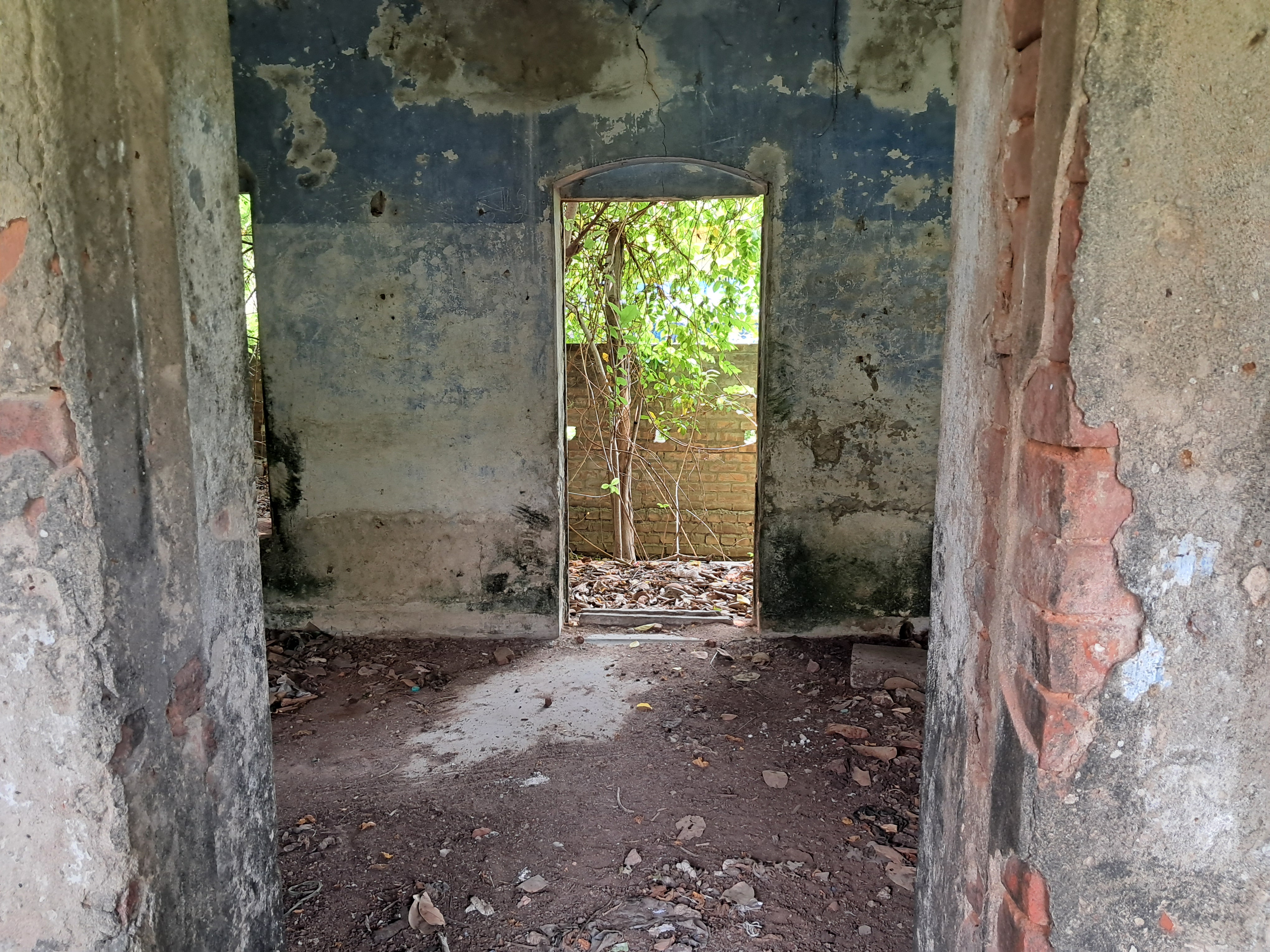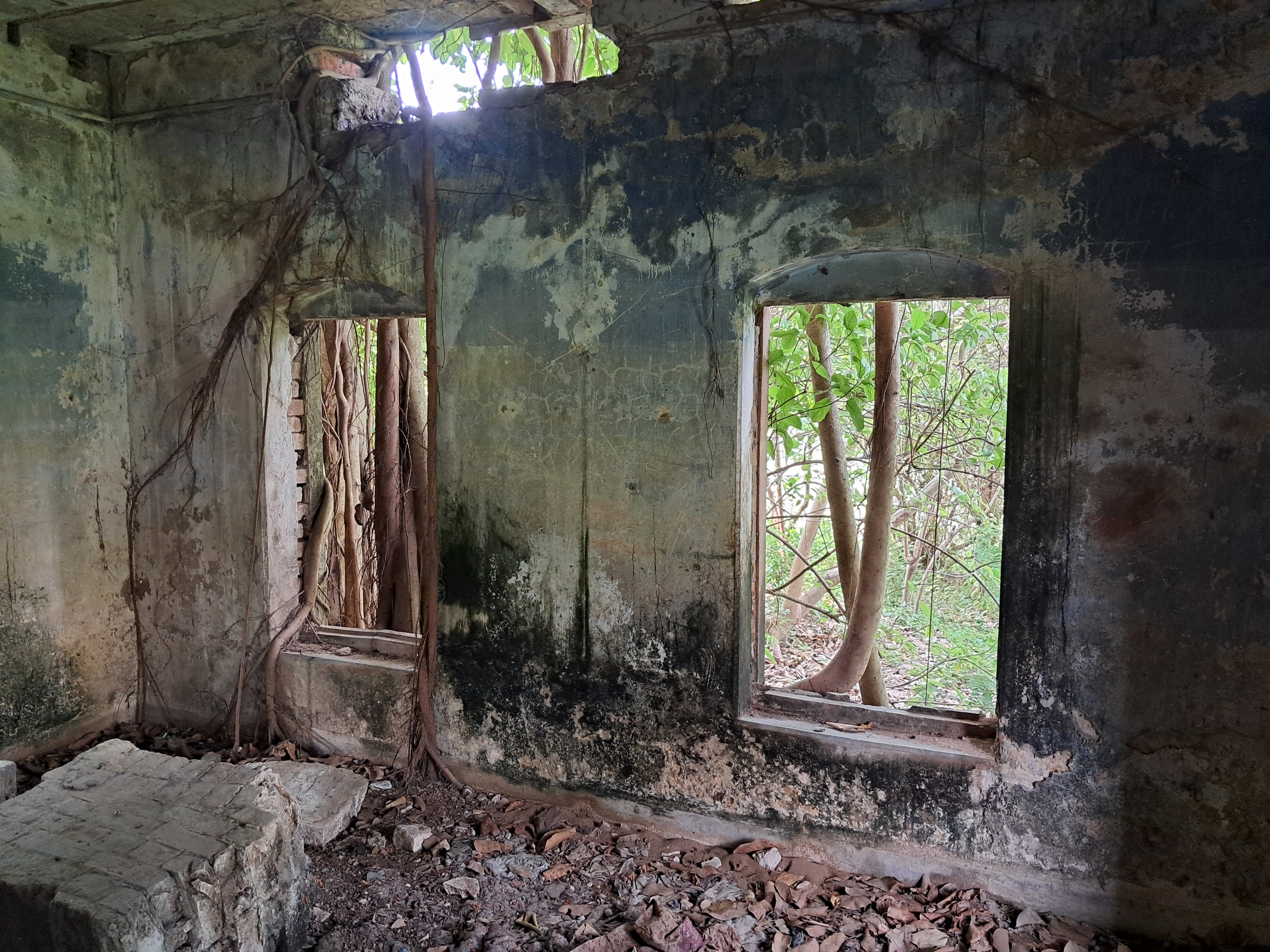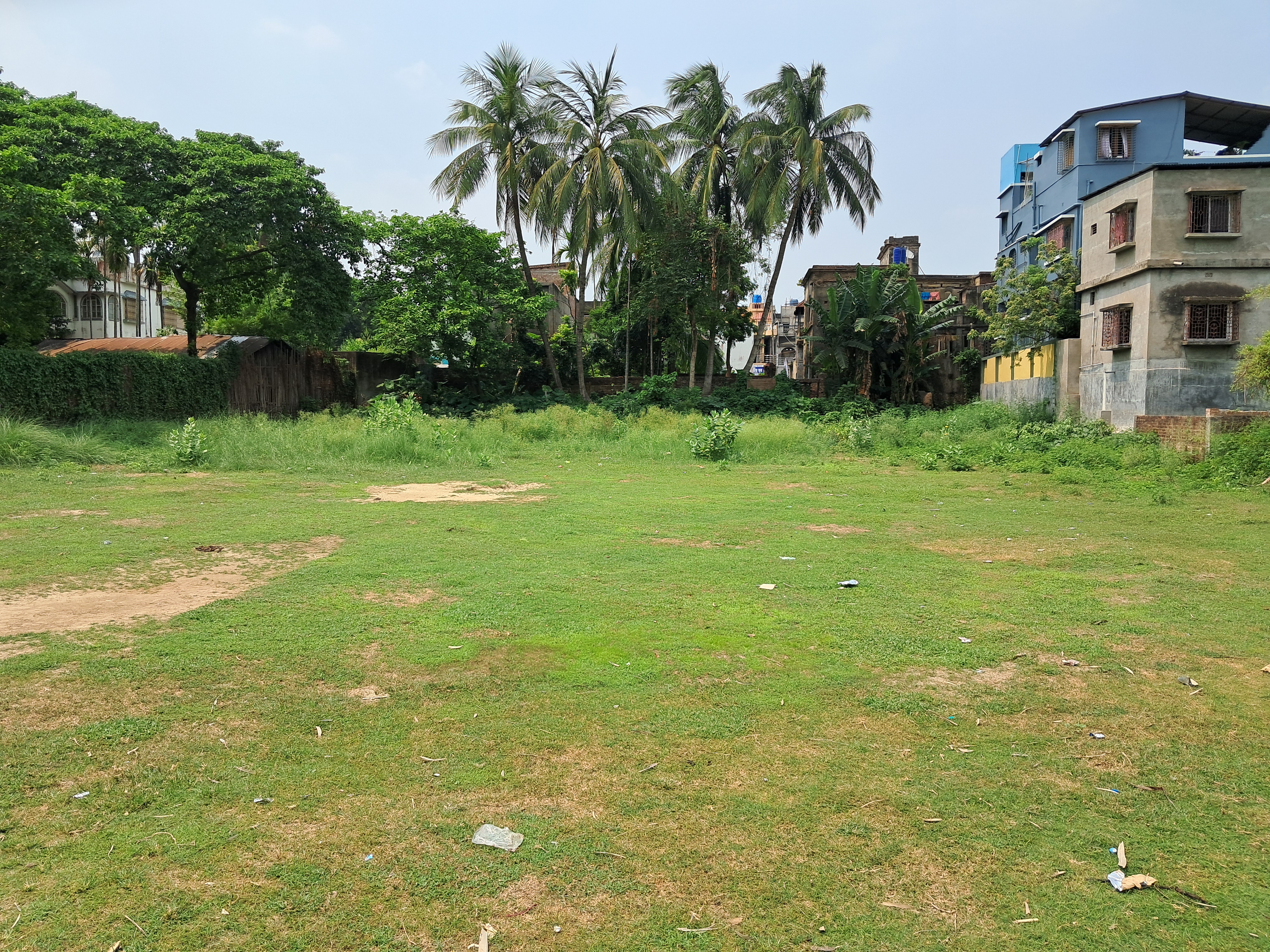Travelling through Nabadwip, I was initially struck by the narrowness of the lanes. The exquisitely slender streets and the rather large pedestrian population make travel on foot or two-wheelers preferable to even totos. The arch at the entrance to the town announces the beginning of this urban landscape with its dense maze-like spatial organisation, which also paradoxically possesses a unique directionality pointing past the banks of Hooghly towards Mayapur, the more popular tourist destination made clear by the unequal saturation of ferry passengers to and fro across the Hooghly. This very directionality solicited my movement from the archway after crossing the Gouranga Sethu towards the Paccatol road.

Perhaps the cognition A really does have as its noetic correlate, the city of Nabadwip grasped as a `mere that’; that is to say, the city is grasped as being bare, as being unadorned. The first attempt I discuss is inspired by the historical position of Prabhākara (especially as reported by Gaṅgeśa1). The implicit contrast being made is with a cognition of Nabdawip as qualified by the presence of Nyāya. When I cognize a table with a pen, I cognize the table as being qualified by the presence of the pen (in virtue of the relation of contact). In contrast to this, when I cognize the bare table, I cognize the table as a ‘mere that’. The phrase mere that must do a lot of heavy lifting here. This indeed remains the essential problem for this attempt at analysing cognition A: to provide a reasonable parsing of mere that which does not circularly involve the notion of absence.
One parsing might be to read ‘a mere table’ as identical to the object of the cognition, i.e., the ’table’ itself. This does not work simply because the cognition of a table with a pen also has the table as its object. However, the meanings or noematic contents of the cognition do not coincide. We do not cognize a ‘mere table’ in the case of cognizing a table with a pen. Nor can we define the notion of a mere table by appealing to anything which is also a part of the cognition of a table with a pen, say, for example, the constellation of causal conditions that are relevant for the origination of the cognition of a table (for they are also present in the latter case). A negation is always more than an affirmation. Regardless, we might still have some reasons to interpret an absence cognition as a cognition of a mere locus.
The Paccatol road looks completely ordinary, with the Nabadwip Vidyasagar College entrance towering onto the road alongside concrete apartments and homes. The street would pass for a test of a contemporary, simple, urban Bengali street hiding a secret (like most of them do). A little way by foot is a sharp turn into a dead end lined with entrances to apartments. At the head of the dead end lies an abandoned structure, reclaimed by a couple of trees and time. This was once the ṭol of Prasanna Chandra Tarkaratna2. The head of the dead end actually faces the side of the building. The building itself, deserted, has no barriers or doors. All the ways in and out are brick archways. Indeed, the rooms inside themselves have no doors. All the openings, then, remain negative entities—gaps. Two young men settled into classic Indian plastic chairs with elongated backs reminiscent of a swan and sat away chatting and gaming on their phones. We shared a look of puzzlement and silence before I walked past them, offering an apology with my eyes for the disturbance. The abandoned building had perhaps just experienced a rejuvenation of the presence of Nyāya in at least a few years (I do not discount other travellers philosophically inclined such as myself), for I was firmly clutching onto a copy of Daniel H. H. Ingalls’ “Materials for the Study of Navya-Nyāya Logic”. Perhaps for a moment, the cognition A was false. However, I stashed the book away and turned my gaze back onto the floor. My perception of this bare floor at least confirms my cognition A. The floor was, nevertheless, not absent of all sorts of debris, tree roots, dried leaves and a modicum of dog shit.


The bare floors of Prasanna Tarkaratna’s ṭol
Ṭols of nyāya were an essential part of the intellectual landscape of early modern India. Sanskrit logic students would arrive at these buildings and be provided with lodging and learning by pandits without remuneration. One must not presume that these pandits were ascetics. Regardless of the rationalist, cosmopolitan framework that these philosophers developed (see Ganeri), one must remember that they often were and remained land-owning, caste Hindus, in particular, almost exclusively Brahmin men (with some notable exceptions). They sustained themselves largely on patronage and were often given acres of land by the local rulers, especially in return for public debates and other services3. Indeed, these spaces were often exclusively for Brahmins4. The bare floors of Prasanna Tarkaratna’s ṭol felt ripe with these contradictions: of histories of rationality and logic, as well as the histories of the zamindari polities, patriarchy and caste.
One way to argue for the ‘mere’ reading of cognition A is to claim that the absence cognition is identical with a cognition of a mere locus, yet descriptions of the cognition appeal to various counterpositives and, hence, contrast it with a cognition of a qualified locus. When I look at the mere table, I cognize the mere table. However, this cognition causes my description to take the form ‘There is no pen on the table’ (and this is distinct from the case with the pen as the cognition which causes my description is different). There is a simple circularity question here: are the two cognitions non-identical due to mutual absence? If we admit this, we might as well fall back into the camp of accepting absences themselves (or at least mutual and constant absences). Instead to keep to the spirit of the attempt, one must follow Śālikanātha’s attempt to appeal to something other than a mutual absence; perhaps via a Platonic approach to subsume difference under identity or essential nature. This method does two important things: (1) it adds a conventional aspect to absence, i.e., absences depend on the conventions of the speakers, and (2) it identifies what would seemingly be various absences. All absence cognitions of absences of various pens (and paintbrushes, books, toothpicks and rhinos) on my table are identified with my cognition of the mere table. The conventional contrast with a particular pen is what helps me describe it as absent on my table. The conventional aspect here is not to be mistaken for a conceptualization that is prevalent in other attempts to discuss cognition A. Gaṅgeśa provides an enlightening example from the perspective of someone like Prabhākara1:
Not so; there are obvious cases where it must be supplemented before it can be expressed, for example the case of expressing length of size. Thus, being long is that [aspect] of size in which the calibrations such as cubits are delimited by a greater number, while being short is that [aspect] of size in which the contrary holds good. Now, a size of this sort [e.g., of something which is long] is apprehended at the very moment of apprehending the whole object in view, but to speak of that object’s being long, one needs also a cognition of that aspect of size whose calibrations in cubits, etc., are delimited by a smaller number.
Hence, the conventional aspect of discussing whether a length is long or short requires a cognition of something other than the original cognition, in this case the cognition of the scale. Similarly, talk of absence requires cognition of something other than the cognition of the bare locus itself. However, this is not to claim that cognition of absence itself has concepts (foreign to the cognition of the bare locus) imposed on it. If this is the structure of our experience, then we must ask what sort of thing ties together our experiences of absences; what is the common character of absences5? An answer that is available to us is the very cognitions of the bare loci. The cognitions of bare loci are causally connected to the cognition of absence. It is only natural to look for the common character in these causally formative cognitions.
However, an aspect of subjectivism remains in this position. Here, by identifying the cognition of absence and the cognition of the bare locus, implicitly, we make absences dependent on cognitions. If one were to subscribe to the seemingly simple formula ‘absence of absence of x = x’, then presences can be translated into absences, which in turn makes presences also dependent on cognition. To say ‘There is Nyāya in Nabadwip’ then amounts to us being required to cognize that the absence of Nyāya is not present in Nabadwip. The Prabhākara realism is under attack here. It seems there is no way out for this analysis of cognition A unless one is ready to do away with a sturdy realism.

A view onto the adjoining land of Prasanna Tarkaratna’s ṭol
The translation of the Abhāva-vāda chapter of the Tattva-cintā-maṇi in Bimal Krishna Matilal’s The Navya-Nyāya Doctrine of Negation, Harvard University Press (1968) ↩︎ ↩︎
Kantichandra Rarhi, Nabadwip Mahima, Nabadwip Purvatattva Parishad (2004) ↩︎
Ganeri has brilliantly detailed how the relatively peaceful rule and regular financing by the Islamic-Bengali sultanate and later the Nadia zamindari system of the region sustained these traditions of logic in Jonardon Ganeri, The Lost Age of Reason: Philosophy in Early Modern India 1450-1700, Oxford University Press (2011). ↩︎
see the chapter on space in Samuel Wright, A Time of Novelty: Logic, Emotion, and Intellectual Life in Early Modern India, 1500-1700 C.E., Oxford University Press (2021) ↩︎
The intended technical term is anugama in [1] ↩︎